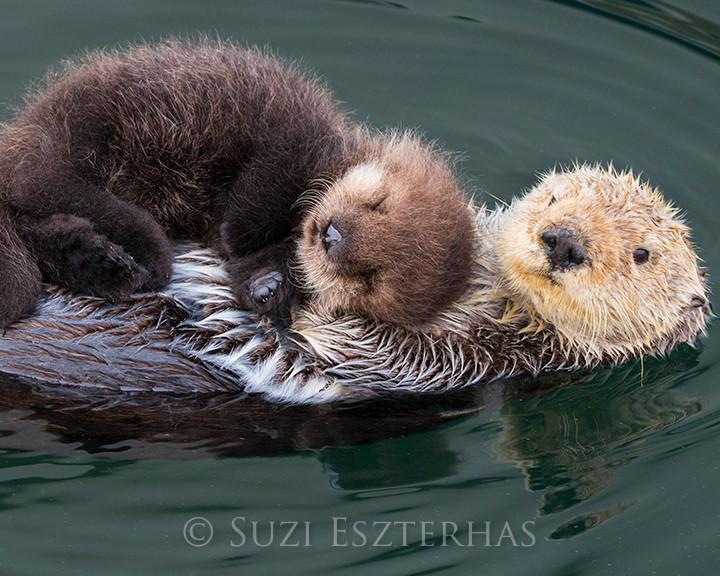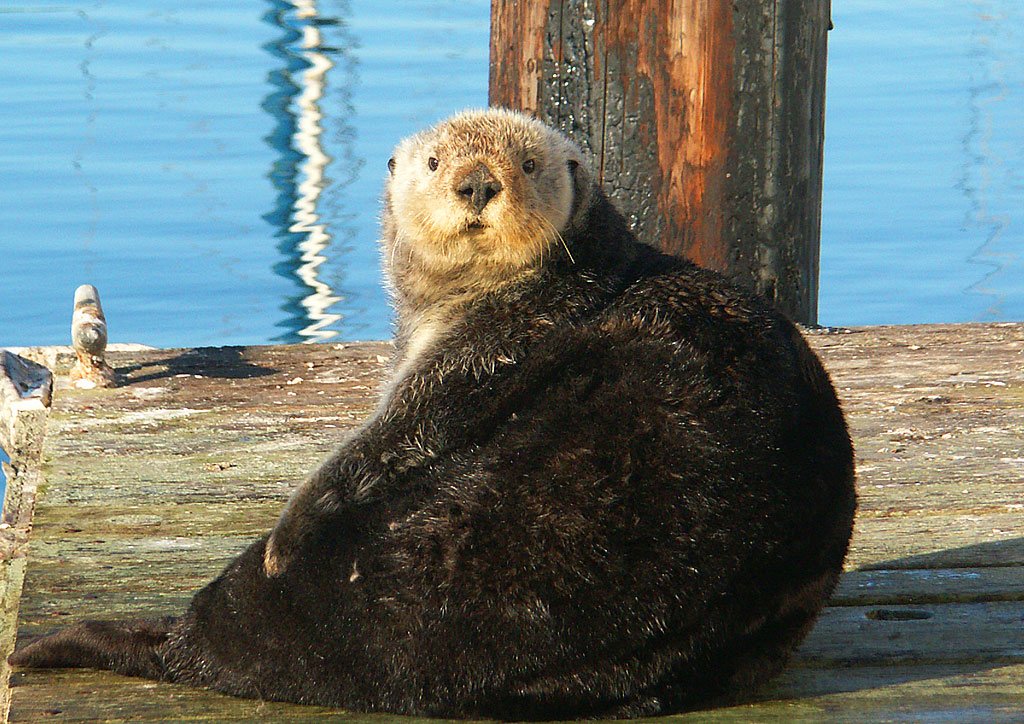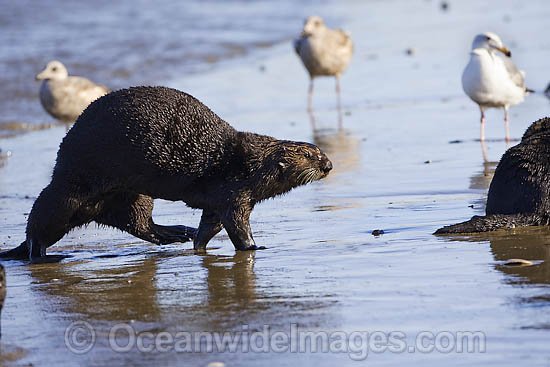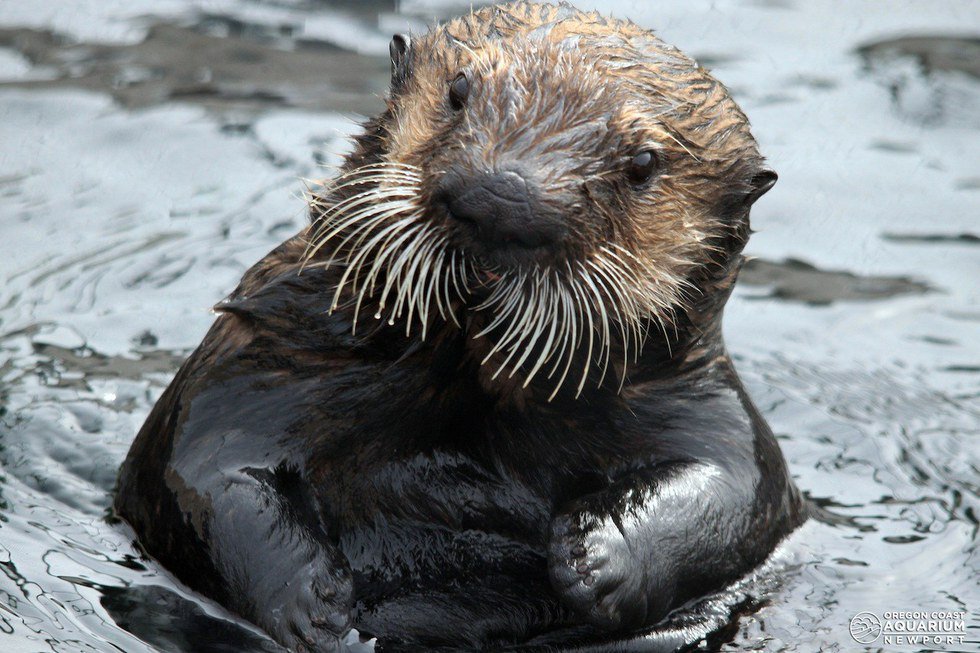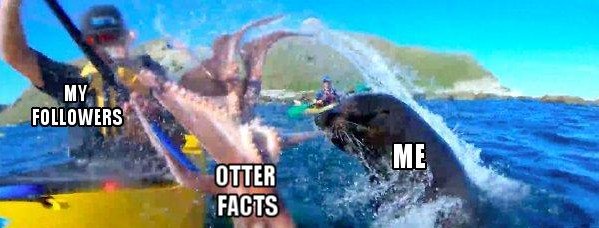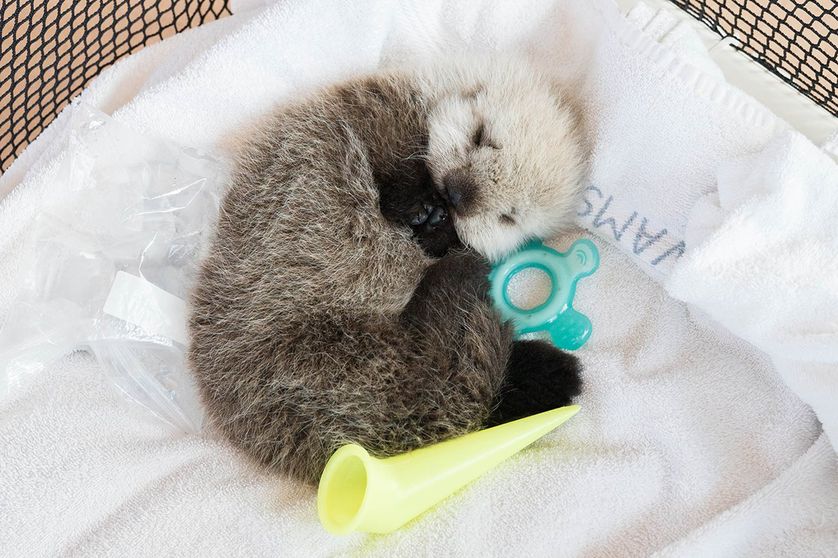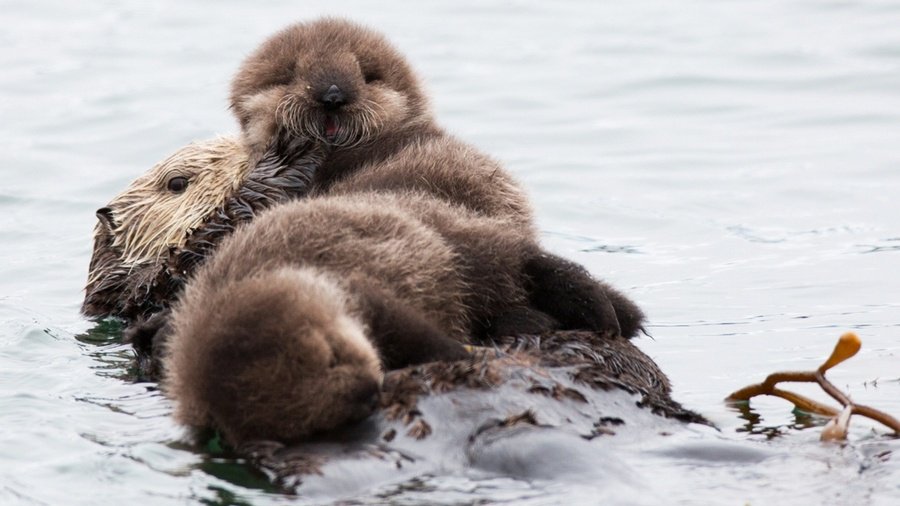Sea otters are a "keystone species" in their coastal marine environment. They keep sea urchin populations in check, which enables kelp forests to flourish and, in turn, support thousands of organisms.
(Keystone species are species on which other species in an ecosystem largely depend, such that if it were removed the ecosystem would change drastically)
Sea otters can grow up to 5 feet long and weigh up to 100 pounds, which is nearly as big as I am.
The lifespan of wild sea otters is typically 10-15 years for males and 15-20 years for females. The oldest sea otter in captivity lived to be 28.
Sea otters hold hands so they don& #39;t drift apart from one other. They often form large groups called rafts and rest together. The largest raft ever observed had over 2000 otters.
Unlike most marine mammals, sea otters don& #39;t have blubber to keep them warm - but instead have the thickest
coat of any animal. They rely
on that fur to protect them from developing hypothermia in the cold ocean water.
coat of any animal. They rely
on that fur to protect them from developing hypothermia in the cold ocean water.
While sea otters are capable of walking on land, many live their entire lives without ever leaving the water.
Gonna up my otter game today because frankly I think we all need it.
Whoops, disconnected thread: https://twitter.com/AnnaGHughes/status/1045361789876092928">https://twitter.com/AnnaGHugh...
Sea Otters forage for food using their dexterous front paws and highly sensitive snoots. The vibrissae, or whiskers, in their nose act as fingers; they can move individually and feel out where
their prey is.
their prey is.
Prey can include sea snails, mussels, crabs, clams, & sea urchins. Sea otters& #39; teeth are ideal for crushing and grinding, but sea otters use rocks as told for harder shells. After preparation, sea otters float on their backs & eat off their tummies.
I cannot stress enough that when baby otters are all flooffed up they& #39;re so buoyant they can& #39;t go underwater. They just float like lil puffballs
Sea otters are curious, playful animals who will see right through you.
I know today was terrible for a lot of us, but I really enjoyed sharing my plethora of otter facts. Goodnight everyone!
Sea otters were nearly hunted to extinction in the 19th century. Today they& #39;re protected under the Endangered Species Act & Marine Mammal Protection Act in the US and the Fisheries Act & BC Wildlife Act in Canada.
The sea otter population was estimated to be 300,000 prior to the fur
hunting boom, which caused their numbers to drop down to 1,000 to 2,000.
After international conservation efforts & hunting bans numbers have rebounded to nearly two-thirds its
initial value.
hunting boom, which caused their numbers to drop down to 1,000 to 2,000.
After international conservation efforts & hunting bans numbers have rebounded to nearly two-thirds its
initial value.
Because sea otters are key to marine conservation and populations in
certain regions have been declining or plateaud on low numbers, they are
still an endangered species.
certain regions have been declining or plateaud on low numbers, they are
still an endangered species.
The biggest threat to sea otters is oil spills. Unlike other marine
mammals, sea otters rely on fur & not blubber to keep them warm. Fur soaked with oil loses its ability to retain air, & the cool water causes them to quickly die from hypothermia.
mammals, sea otters rely on fur & not blubber to keep them warm. Fur soaked with oil loses its ability to retain air, & the cool water causes them to quickly die from hypothermia.
The Trump Administration wants to roll back the Endangered Species Act,
which was largely responsible for bringing sea otters back from the brink
of extinction. #SeaOtterAwarenessWeek
which was largely responsible for bringing sea otters back from the brink
of extinction. #SeaOtterAwarenessWeek
Ok that& #39;s it for this truly massive thread. Thanks for riding along!

 Read on Twitter
Read on Twitter
